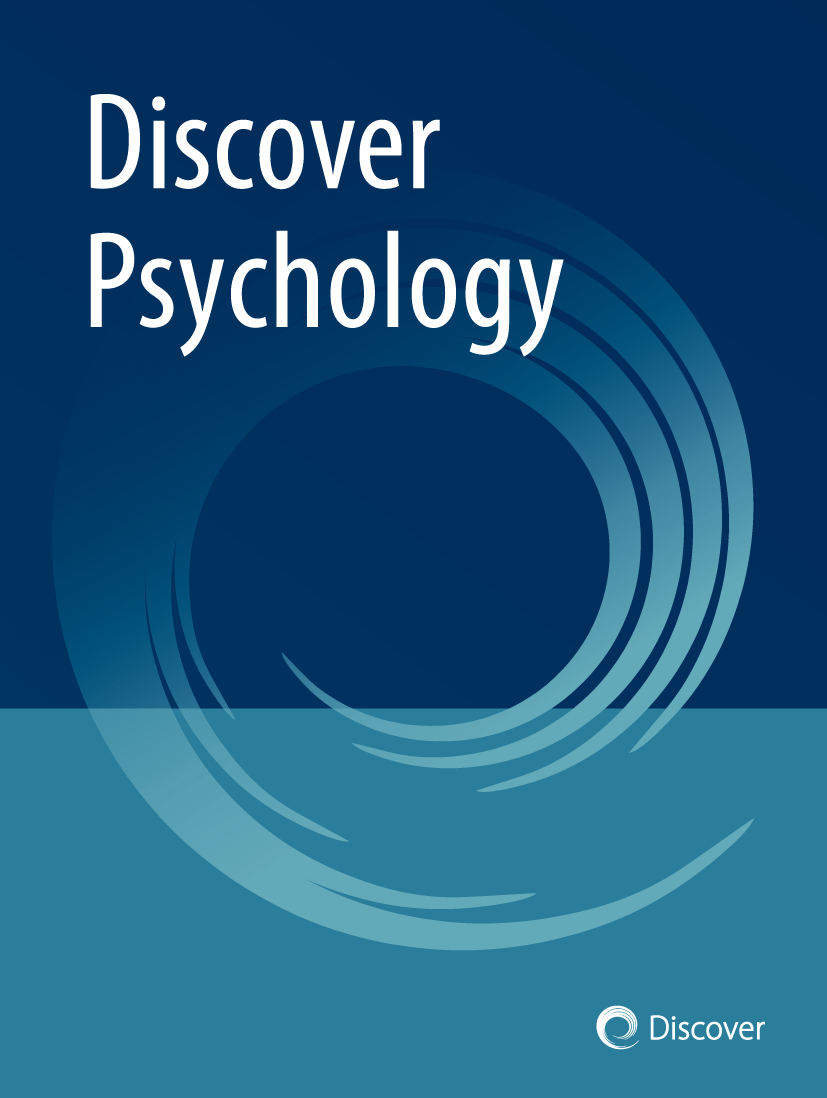The Relationships Between Strengths-Based Teaching Practices and Students' General, Strengths, and Academic Self-Efficacy
Published in Behavioural Sciences & Psychology and Education

BACKGROUND
Deficit-based teaching practices are deeply ingrained in higher education. For example, professors may use subtractive grading, set low expectations, make judgments or stereotypes of students based on their backgrounds, or ignore their backgrounds altogether. To address the significant issues associated with the deficit-based teaching approach and to promote engagement, confidence, and academic success, educators can transition to a strengths-based teaching approach, which identifies and nurtures students’ unique abilities, talents, and potential.
WHY WE PURSUED THIS STUDY
As professors in higher education, we continually encounter students who have low self-efficacy, which is the belief in their ability to accomplish specific tasks or goals. This may be due to a lack of support, poor role models, negative feedback, or a feeling of perfectionism. Yet, self-efficacy is particularly important for students as it impacts their behavior, motivation, and overall performance in school.
As such, we wondered if, as teachers, we could positively influence our students’ confidence and belief in themselves. So, we pursued our study on The Relationships Between Strengths-Based Teaching Practices and Students' General, Strengths, and Academic Self-Efficacy, hoping that the results would help us to quantify the impact teachers have on their students’ self-efficacy. Furthermore, through publication, we also aimed to share the results with other educators who would be open to changing their teaching practices to a strengths-based approach.
RESEARCH PROCESS
Once we received approval to conduct the study, we recruited college students to participate. The sample included a diverse group of 268 participants from a community college in the Northwest United States, a university in the Southwest United States, and a university in the Midwestern United States. The participants represented students at different stages in their academic journey from a variety of academic disciplines.
Our quantitative research was conducted using a comprehensive set of four instruments to gather data. One tool assessed students' perceptions of their teachers' implementation of strengths-based teaching practices. The remaining three tools measured college students' overall self-efficacy, strengths self-efficacy, and academic self-efficacy. This rigorous approach allowed us to obtain a holistic understanding of the impact of strengths-based teaching on students' self-efficacy.
COLLABORATIVE EFFORT
This research project was an example of true collaboration between like-minded education professionals, and each contributor shared their gifts with the group. For instance, the main author has extensive experience supporting students' strengths in and out of the classroom and proposed and implemented the research project. Additionally, the second author of the research team has a strong psychology background, and they were able to analyze the data and interpret the findings. Lastly, our research team benefitted from the expert writing skills of our third author. By working together and utilizing the strengths of each group member, our research project went better than we could have imagined.
WIDER CONTEXT OF OUR FINDINGS
The results of this study indicated a positive perception of teachers’ strengths-based teaching, suggesting that this approach could be effective in various educational settings and for students with different backgrounds and academic goals. Rather than concentrating solely on students' weaknesses, according to our participants, these educators acknowledged and fostered their students' talents, interests, and positive qualities. As such, there are practical implications to these findings, such as the potential for implementing strengths-based teaching strategies to enhance student engagement, motivation, and academic achievement across diverse classroom environments. Furthermore, this approach not only empowers students to recognize and leverage their unique abilities but also cultivates a supportive and inclusive learning environment conducive to holistic development.
Additionally, statistically significant, moderately positive correlations were found between strengths-based teaching practices and college students' overall, strengths, and academic self-efficacy. In other words, when teachers utilize strengths-based teaching, there is a potential that they could have a positive impact on students’ belief in their capabilities in school and other contexts. For instance, a professor interested in transitioning to a strengths-based approach could provide feedback that focuses on students’ strengths rather than their weaknesses, ultimately influencing their students’ confidence in their capacity to succeed across various domains of life. Also, when challenges occur, this student might also be able to demonstrate resilience and adapt to change so they can strive toward their goals.
PRACTICAL STRATEGIES
Implementing strengths-based teaching in and out of the classroom requires intention, but this study's results indicate that it is worth the effort.
Here are some practical strategies for implementing strengths-based practices in and out of the classroom:
1. Identify and acknowledge students’ strengths through interactions in the classroom.
“I notice you are demonstrating leadership in this collaborative project. This skill is valuable as you will likely work with others in your future career, so you are already gaining valuable experience!”
2. Integrate strengths assessments into the curriculum and use the results to individualize learning.
“I noticed that your VIA Character Strengths assessment indicated that you are a courageous person. There is a speech competition coming up; I wonder if you might like to apply.”
3. Provide class activities that emphasize students’ strengths and show them how those strengths will be beneficial.
“During your mock teaching demonstration, you showed a lot of poise under pressure. This is a valuable skill as we often need to perform in stressful situations.”
4. Incorporate students’ strengths into feedback.
“I was really impressed with your creative approach to this assignment. This can be a valuable trait for coming up with unique solutions to problems that arise.”
CONCLUSION
Regardless of your title — professor, educator, teacher, instructor, lecturer, tutor, mentor, or coach — you and your students can all reap the rewards of transitioning from a deficit-based approach to a strengths-based approach. Drawing from our collaborative discussions, teaching experience, and the outcomes of our study, we strongly advocate for educators in all sectors to contemplate adopting strengths-based teaching. We are confident that you will witness increased student engagement, enhanced academic performance, and a boost in your students' self-efficacy and confidence.
Follow the Topic
-
Discover Psychology

This is an international, open access journal that publishes research in behavioral sciences and related fields, including health, environment, neuroscience, business, economics, ergonomics, linguistics, and education.
Related Collections
With Collections, you can get published faster and increase your visibility.
Artificial Intelligence in Psychology: Navigating the Intersection of Minds and Machines
The dynamic landscape of psychology is undergoing a profound transformation propelled by the rapid advancements in Artificial Intelligence (AI). In this evolving paradigm, the symbiosis between human cognition and machine intelligence unfolds, offering unprecedented opportunities and simultaneously posing novel challenges. This special issue extends an invitation for contributions that probe the intricate relationship between AI and psychology, exploring intersections that are shaping the future landscape of mental health, behavior analysis, and cognitive processes.
AI's impact on psychology is broad and diverse, encompassing a spectrum of areas. Firstly, there is a focus on the innovative applications of machine learning for behavioral analysis and modification (a). Additionally, the influence of AI on emotional well-being and mental health is examined (b), along with an exploration of shifts in cognition and decision-making in the AI era (c). The call for submissions also encompasses the investigation of societal attitudes, beliefs, and ethical considerations surrounding the integration of AI in psychological practices (d). Furthermore, attention is given to the role of AI in diagnosis and personalized therapeutic interventions and (e), as well as the ethical implications of AI-driven psychological research (f). The collection also delves into the influence of AI in enhancing educational methodologies and psychological interventions (g).
This interdisciplinary Topical Collection strives to amalgamate cutting-edge research that navigates the dynamic interplay between artificial intelligence and psychology. Submissions are encouraged to explore the transformative potential of AI not only in understanding and modifying human behavior but also in the crucial domain of diagnosis. Submissions are sought that shed light on the role of AI in diagnosing psychological conditions, thereby expanding the horizons of AI applications in the realm of mental health.
Keywords: Artificial Intelligence; Machine Learning; Psychology; Mental Health; Ethical Considerations; Cognitive Processes; Behavioral Analysis; Therapeutic Interventions; Educational Methodologies; Mathematical Modelling; Diagnosis
Publishing Model: Open Access
Deadline: Dec 31, 2025
Teacher Mental Health in Educational Settings: Determinants, Protective Factors, and Educational Impact
Teacher mental health has emerged as a critical concern in educational research, particularly as educators face unprecedented challenges in contemporary educational settings. This Collection advances our understanding of teacher mental health by examining its multifaceted nature, determinants, protective mechanisms, and impacts on educational outcomes. We welcome empirical studies, theoretical frameworks, and innovative methodological approaches that investigate the dynamic interplay between teachers' psychological well-being and the educational environment.
The collection invites contributions addressing key areas including: psychological need satisfaction and thwarting in teaching contexts; patterns of occupational stress and burnout; work-related motivation and engagement; protective factors at individual, school, and systemic levels; and the ripple effects of teacher mental health on student outcomes and school climate. We particularly welcome studies examining cultural variations in teacher mental health, innovative intervention approaches, and the impact of recent global challenges on teacher well-being.
We seek submissions employing diverse methodological approaches, including quantitative, qualitative, and mixed-methods designs. Studies featuring advanced statistical techniques such as structural equation modeling, multilevel analysis, or longitudinal designs are especially encouraged, as are cross-cultural investigations that offer comparative perspectives on teacher mental health across different educational contexts.
This collection aims to inform evidence-based practices and policies that enhance both teacher well-being and educational effectiveness. We invite contributions from established researchers and emerging scholars to advance this crucial discourse in educational psychology.
Keywords:Teacher mental health, Psychological well-being, Occupational stress, Teacher burnout, Work motivation, Protective factors, School climate, Student outcomes, Educational psychology, Mental health interventions
Publishing Model: Open Access
Deadline: Feb 28, 2026



Please sign in or register for FREE
If you are a registered user on Research Communities by Springer Nature, please sign in